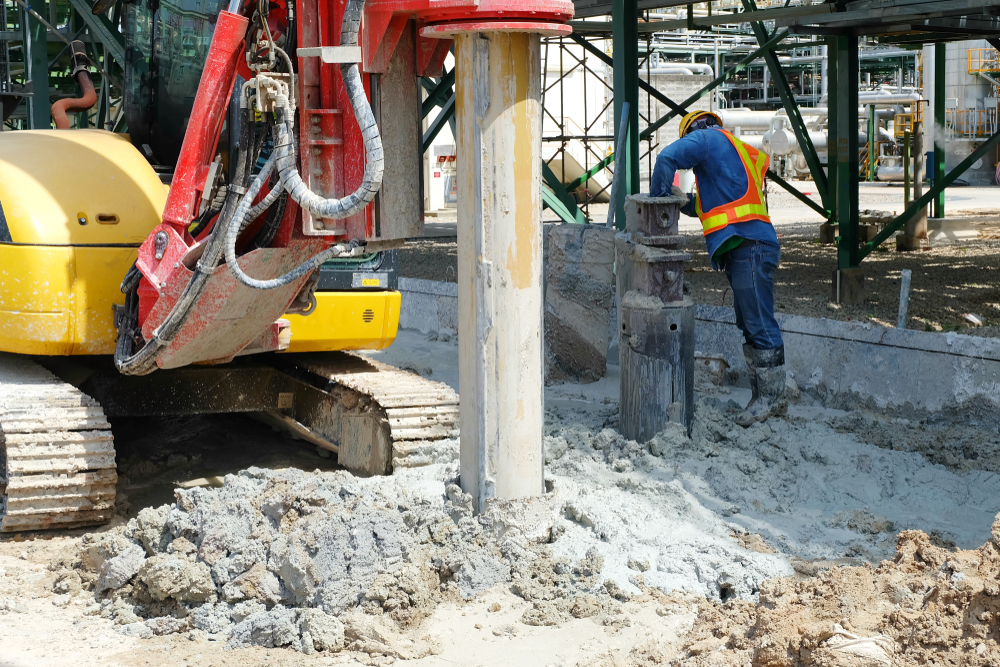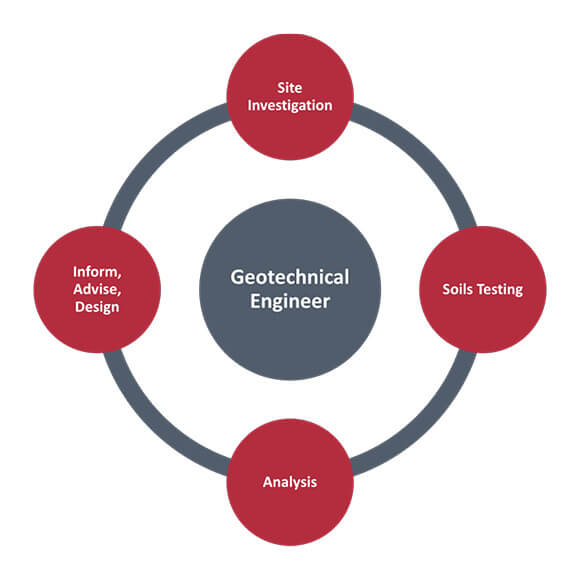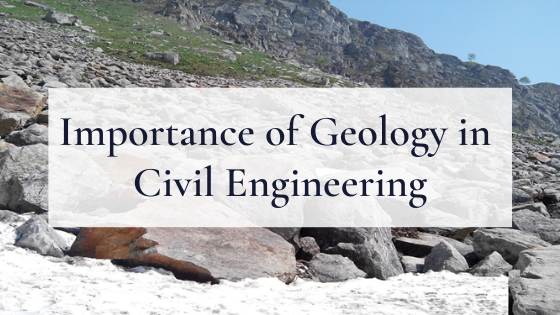See This Report on Geotechnical Engineering For Construction Projects
Not known Facts About Geotechnical Engineering For Construction Projects
Table of Contents8 Simple Techniques For Geotechnical Engineering For Construction ProjectsThe smart Trick of Geotechnical Engineering For Construction Projects That Nobody is DiscussingThe Single Strategy To Use For Geotechnical Engineering For Construction ProjectsThe Main Principles Of Geotechnical Engineering For Construction Projects Fascination About Geotechnical Engineering For Construction ProjectsAbout Geotechnical Engineering For Construction ProjectsNot known Facts About Geotechnical Engineering For Construction Projects
Concepts and Practice of Ground Renovation. Ground Improvement Principles And Applications In Asia. Layout evaluation in rock mechanics.Cengage Understanding, Stamford, 666 p. Atkinson, J., 2007. The technicians of dirts and foundations. Taylor & Francis, N.Y., 442 p. Floating Offshore Wind Wind Turbines: Responses in a Sea state Pareto Ideal Styles and Economic Evaluation, P. Sclavounos et al., October 2007. Nicholson, D, Tse, C and Dime, C. (1999 ). The Observational Approach in ground design concepts and applications.
Geotechnical Engineering For Construction Projects Can Be Fun For Anyone
Laboratory and area screening plays a critical function in this procedure. By extracting examples from the earth's subsurface and using a suite of examinations, geotechnical engineers can forecast the behaviour of soil layers and evaluate their viability for different construction efforts. The essence of geotechnical engineering in civil design can not be overemphasized, attributable to numerous aspects: The preliminary action in any geotechnical study entails figuring out the dirt kind at the building and construction website.
Understanding these qualities makes sure that just appropriate dirt kinds are picked for the advancement, consequently averting possible structural failures. The foundation acts as the bedrock of any type of building and construction project. Picking the appropriate foundation type is a decision that rests on the comprehensive analysis offered by geotechnical design. This makes certain the longevity and stability of structures by fitting the tons they will certainly birth.

Geotechnical website examination is an essential step in the planning and execution of any construction job. It includes the collection and analysis of data associated with the physical properties of dirt and rock under a recommended building and construction website. This info is vital for the style and building of secure, secure, and lasting frameworks.
Our Geotechnical Engineering For Construction Projects Ideas
In this blog, we will certainly look into the value of geotechnical site examination, its numerous elements, and how it profits building tasks. Geotechnical site examination, likewise called subsurface exploration, entails a series of tasks targeted at figuring out the dirt, rock, and groundwater conditions at a building website. The key objectives are to recognize potential geotechnical threats, evaluate the design residential or commercial properties of subsurface products, and provide referrals for the design and building of structures, keeping wall surfaces, and various other structures.
This might consist of geological maps, airborne pictures, previous examination records, and historic data. The desk study helps in identifying prospective geotechnical problems and preparing the subsequent fieldwork. Complying with the workdesk research, a website reconnaissance is conducted to visually inspect the site and its environments. This includes observing the topography, drain patterns, existing frameworks, plants, and any type of indications of instability or disintegration.
Not known Facts About Geotechnical Engineering For Construction Projects
Superficial test pits are dug deep into to directly observe and example the soil and rock. check out here This technique serves for researching the top layers of the subsurface and recognizing near-surface dangers. Non-invasive geophysical approaches, such as seismic refraction, ground-penetrating radar (GPR), and electrical resistivity tomography (ERT), are made use of to map subsurface conditions and discover abnormalities.
Dirt and rock samples collected during the field investigation are subjected to research laboratory screening to identify their physical and mechanical residential properties. These examinations provide necessary information for geotechnical evaluation and layout.
The key benefit of geotechnical site examination is ensuring the safety and security and stability of structures. By understanding the subsurface conditions, engineers can design foundations and other structural elements that can stand up to the loads and environmental pressures they will certainly be subjected to. This reduces the danger of settlement, decrease, and structural failure.
How Geotechnical Engineering For Construction Projects can Save You Time, Stress, and Money.
This makes sure efficient and risk-free building and construction practices. Geotechnical site examinations are frequently required by developing codes and laws.
This information is vital for project managers, designers, and specialists in developing reasonable routines, spending plans, and backup plans. Geotechnical Engineering for Construction Projects. Skyscraper in a Coastal AreaIn a coastal city, a high-rise residential building was intended on a site with presumed loosened sand deposits and a high water table. A thorough geotechnical examination, consisting of borehole drilling, CPT, and geophysical surveys, was carried out
Geotechnical Engineering For Construction Projects for Beginners
Based upon these searchings for, the structure style was modified to include deep pile structures extending right into steady strata, and ground enhancement methods, such as vibro-compaction, were executed to minimize liquefaction risks. This proactive strategy made sure the safety and stability of the structure while preventing costly post-construction removal. Facilities Development on a Sloping TerrainA major infrastructure task, entailing the building and construction of a freeway and bridges, was intended on a sloping surface with steep slopes.

The Leaning Tower of Pisa (Italy), a famous architectural wonder, is notorious for its unintentional tilt from significant geotechnical concerns. The tower's foundation was improperly developed to handle the soft, unpredictable soil below it, bring about uneven negotiation and its distinctive lean. Our globe is dotted with remarkable facilities projectsfrom looming high-rise buildings to sprawling bridgesall standing testament to the evolution of the numerous construction equipment and methods available.
Geotechnical design is a specific area within civil engineering that focuses on researching the behavior of planet materials. This branch delves deep right into the groundinvestigating just how the soil, rock, and groundwater at a building website can influenceand be influenced bythe facilities that we erect on and right into them. Prior to a single brick is laid or a concrete foundation put, geotechnical designers probe into the earthgathering essential data regarding the website's dirt composition, rock This Site framework, and groundwater degrees.
The Single Strategy To Use For Geotechnical Engineering For Construction Projects

is a device used to evaluate the stability and load-bearing ability of piles during setup, leveraging the principle of wave breeding. It maximizes building and construction efficiency by offering real-time examinations, hence making sure secure and reliable pile structures. Among the sensible applications of geotechnical engineering involves making a decision and implementing the right methods for structure building and construction.
Load driving stands for even more than the plain act of inserting architectural components right into the ground. However, it is a very carefully coordinated procedure of transferring a structure's load past the much less stable dirt layers closer to the surfacedown to the much more significant strata that lie below. When it comes to stack driving, take into consideration exactly how geotechnical engineers expertly utilize this method to uniformly disperse the structure's weight.